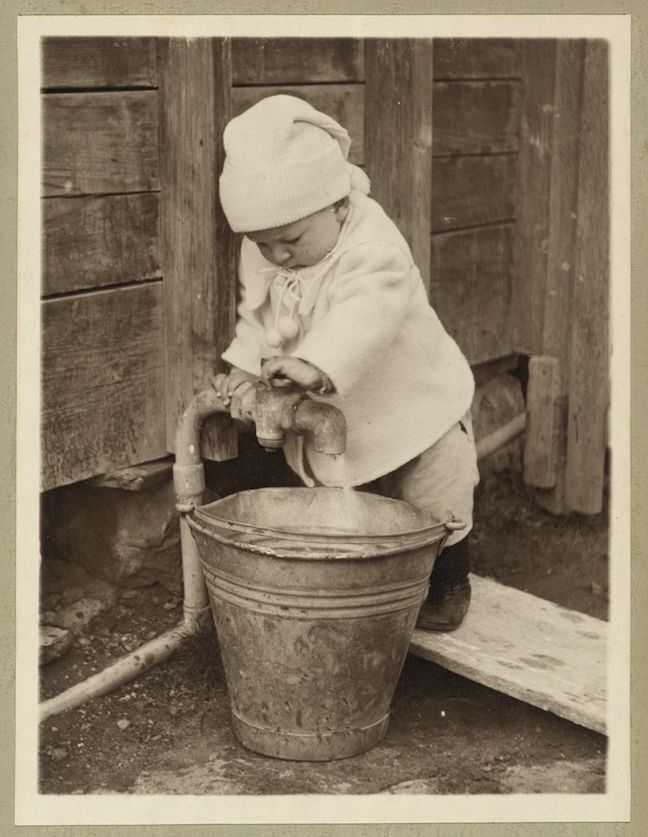The children of three years of age in the "Children's Houses" [the Montessori classroom for 3- to 6-year-olds] learn and carry out such work as sweeping, dusting, making things tidy, setting the table for meals, waiting at table, washing the dishes, etc., and at the same time they learn to attend to their own personal needs, to wash themselves, to take showers, to comb their hair, to take a bath, to dress and undress themselves, to hang up their clothes in the wardrobe, or to put them in drawers, to polish their shoes.
These exercises are part of the method of education, and do not depend on the social position of the pupils; even in the "Children's Houses" attended by rich children who are given every kind of assistance at home, and who are accustomed to being surrounded by a crowd of servants, take part in the exercises of practical life. This has a truly educational, not utilitarian purpose.
The reaction of the children may be described as a "burst of independence" of all unnecessary assistance that suppresses their activity and prevents them from demonstrating their own capacities. It is just these "independent" children of ours who learn to write at the age of four and a half years, who learn to read spontaneously, and who amaze everyone by their progress in arithmetic. ... These children seem to be precocious in their intellectual development and they demonstrate that while working harder than other children they do so without tiring themselves. These very children reveal to us the most vital need of their development, saying: "Help me to do it alone!"
--Maria Montessori (From Childhood to Adolescence)


